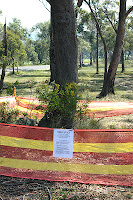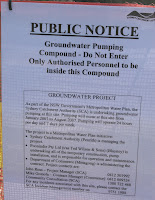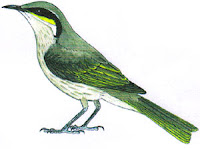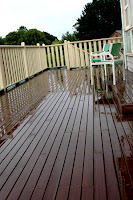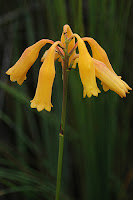
These unusually coloured
Christmas Bells (
Blandfordia nobilis) were flowering at Butler's Swamp yesterday. There were other, more normally coloured ones, around as well. Those were like the photo
I published in the blog entry two days ago. Classic red and gold ones. But these gold ones have a charm all of their own.
I shall report this find to some friendly botanists. The flowers have a faint tinge of red flushed through the golden colour, so it is likely that they would be regarded only as a variant from the type. Still, it is great to see them growing in the wild, in Butler's Swamp.
I have done a "Google Image" search under
"Blandfordia nobilis". Some are more orange and yellow, than the standard red and gold flowers. But none of the images which come up in a "Google Image" search show this clear gold colour. So it is obviously unusual. Click on the hot link above to go straight to the Google Image search.
These are serious pipes.
Butler's Swamp is one of those "Endangered Ecological Communities" which is protected under Federal legislation. With unusual plants such as this, it is important that the place be protected from the effects of the borefield sucking the groundwater from under this swamp, and others like it.
The photos of the pipes show just how large these pipes are. They will carry a huge amount of water, 24/7 for 6 months. In the process, they will do huge damage to the wetlands, and to the forests as well, we believe.
The
AAP Newsagency carried the following story yesterday:
January 25, 2007 - 7:59AM
"Environment and Water Resources Minister Malcolm Turnbull has put a stopwork order on the NSW Government's key $50 million water plan project, thanks to Latham.
The Latham Snipe, the bird, that is.
Pipe wall thickness demonstrated
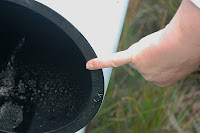
Mr Turnbull's department believes the bird may be harmed by the State Government's Kangaloon aquifer project, News Limited reports.
The project would "mine" water beneath western Sydney to augment the city's dwindling water supply. It was meant to come online next month.The stopwork move had put Premier Morris Iemma's whole water policy at risk, New Limited said.
However, the federal Department of Environment, Heritage and Conservation has written to the Sydney Catchment Authority saying it is concerned that "subtle" changes in the hydrology from the mining may have an impact on a number of birds and flowers.
"Large diameter production bore"It means what the name says.

"The state government has cried foul, claiming it is nothing more than political interference and hypocrisy," the News Limited writes and quotes state Environment Minister Bob Debus as saying: "Again, the Federal Government entwines us in red tape as we try and deliver water".
© 2007 AAP
*****
There are some factual problems with the details of this story. None-the-less, at least we know that the Department of Environment is now asking the right questions of the SCA.
Clearly, they have read our submissions in detail and are asking the SCA to answer the very specific questions we raised. For example, we raised the details about hydrological changes to the swamps? The DEH's own listing of the "Montane peat swamps" (as a category) lists hydrological changes as a threatening process. In its original submission, The SCA had said there would only be minor disturbances around the fringes of the swamps. They completely omitted to mention that they were going to suck the groundwater down to 60 metres below the swamps.
 This is not the "win" we were first told it was. But it is a far better outcome than the SCA being granted approval to go ahead with the borefield.
This is not the "win" we were first told it was. But it is a far better outcome than the SCA being granted approval to go ahead with the borefield.
This is the report as it first appeared on page 2 of the Daily Telegraph, 25 January 2007.
 I have a young pal called George, who lives on Tourist Road, in Kangaloon. He and his Mum and sisters live at "Dragon Farm".
I have a young pal called George, who lives on Tourist Road, in Kangaloon. He and his Mum and sisters live at "Dragon Farm".

























